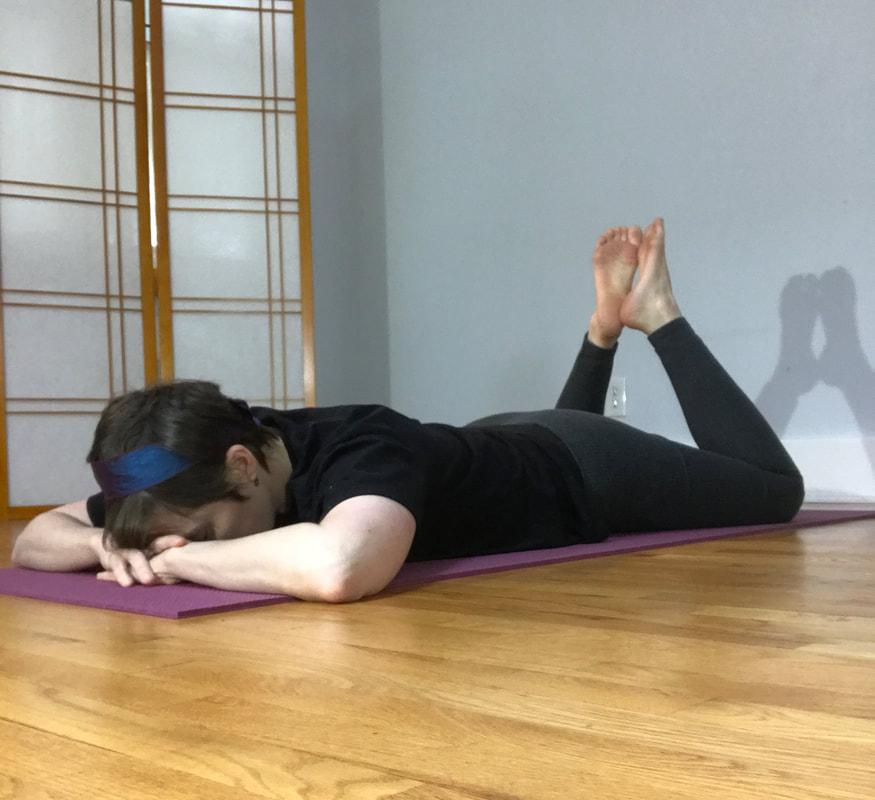|
Find this lesson here: On the belly, twisting movements to free the head and neck | Heather (Danso) Emanuel GCFP on Patreon
A lesson of movements lying on the abdomen (mostly) letting legs fall right and left, while softly letting go of usual co-contraction along the spine, in the ribs, and in the whole self. When you practice using movement to help lower your habitual level of tension, you find an alternative way of holding yourself, better breathing, easier carriage of the head over your shoulders, and also greater freedom in your shoulder blades. What this means is you'll have more room to feel more like yourself.
0 Comments
This can be one of those lessons where you try something, take a break, try it again, take a break. Remember to decrease the amount of effort as you become comfortable/oriented to a movement. One of the signs of using a lot of effort is your breathing (or lack there-of). Another sign might be using your upper body to lift your pelvis, or pinning your head in the center during rolling movements. Remember, the movements are here for you to learn about yourself: in themselves, the movements aren't the point. So more/larger isn't better. Small, and clear is more helpful. Feel what you do. Feel the trajectory of movement. Listen for ease in your breath, hands, jaw, and eyes as you go.
Available on Patreon patreon.com/heatherdanso For this lesson, you'll need wingspan (room to reach your arms. Only the audio lesson will be available on the blog. I'll upload some photos/videos of the movements so that you can see an idea of what you'll be doing. However, if you don't have the video, then you'll have the opportunity to become confused, which is not a bad thing! "If you are not confused, you are not learning". Find some length in your neck, and where did that come from? Must be something about the ribs, as the movements we did today seemingly target the shoulders, but truthfully, the constraint is something more: What needs to move to make this easy? Where can I soften? How do I use my whole self?
Use everything, try everything in a slow, playful way. Get confused. Breathe. Don't worry. In the transcript of this lesson, Moshe watches everyone jump to do what they are told, which they apparently do without feeling how. He says: "Whoever [does] it immediately can go home because it is a sign that he doesn't know what he is doing" --what we are really doing here is learning to be in a process of learning. Doing the movement is not the point. Being in the process of learning is the point. Learning how you work, learning how you are with yourself, learning what is available for you--that's the point.
Walking scan, and then a lesson lying down. How do you transmit force down through your legs, how do you sense the rebound from the Earth? How does this lesson impact your movement after the lesson? For one student who mostly imagined, he began with a tremendous limp from a lumbar injury; at the end of class, no limp. What changed for you?
Curious? Review how to do an ATM before you try one!
The scan in the beginning is in standing! Go easy. Do less. Feel more. Pay attention to how you do what you do, and only do what feels gloriously available, and delicious. This video below is an approximation of the lesson, as a reminder, but not as a determination of what you will do. Sometimes when doing a lesson, you would not even know I am moving. The beginning of the movement is enough. The intention is enough. Then, see how you change! Be sure to do a scanning process on your back as you begin. Play with the idea of not being goal oriented, and being goal oriented. Feel the movements associated with both states of mind. How does being goal oriented change your demeanor? How does it change your facial muscles?
|
HOW-TORecorded at public classes, All audio classes are now on Patreon. Please read the HOW-TO before doing a lesson. Archives
April 2024
Categories
All
|
||||||||||||||||||||||||||||
Heather Emanuel, GCFPSchedule Appointment
|
|


 RSS Feed
RSS Feed